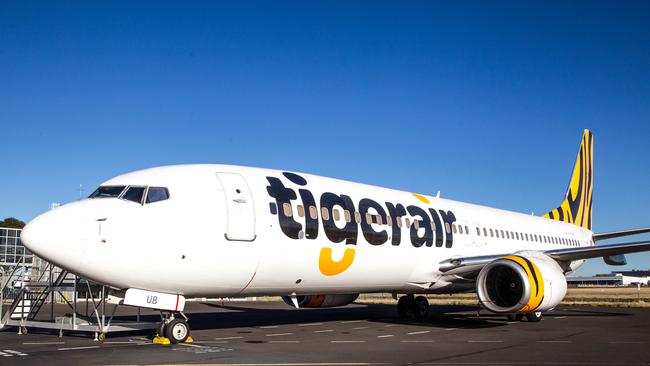Pilot checklist oversight saw passengers at possible risk of hypoxia
A basic check missed by pilots left Tigerair passengers potentially without oxygen.

The Australian Transport Safety Bureau’s final report on the incident on July 12 last year revealed the trainee first officer and training captain failed to turn on airconditioning packs which pressurise the aircraft at high altitude.
The step was included on the before taxi, takeoff procedure and after takeoff checklists but was missed each time, the report said.
According to the report cabin pressurisation is “essential to providing a safe and comfortable environment for aircraft occupants flying at high altitude”.
“In an unpressurised cabin at high altitude, aircraft occupants are exposed to the possibility of hypoxia, which can lead to loss of consciousness and possible loss of life,” the report said.
As the Boeing 737 reached 13,500 feet (4114m), a cabin altitude warning horn sounded and the first officer identified that the airconditioning packs were turned off.
Both packs were immediately turned to AUTO as the aircraft climbed to 14,900 feet (4541m). From there, the captain disengaged the autopilot and descended to 10,000 feet (3048m) where the cabin altitude checklist was completed.
The pilots donned oxygen masks in accordance with procedure until cabin pressure was considered under control.
A range of factors were found to have contributed to the pilots’ oversight, including training, distraction, high workload, the low expectancy of error and supervision lapses.
“Flight crews are reminded that effective checklist management is essential for verifying that critical procedural items are undertaken and ensuring safe aircraft operations,” said ATSB director of transport safety Stuart Godley.
The investigation noted that the first officer had significant experience on other aircraft types, and as such the captain may have relaxed his supervision, contributing to the lapse.
“Although a highly experienced pilot, the first officer was still a trainee on the Boeing 737 and as such, required vigilant supervision by the training captain,” Dr Godley said.
“This is a crucial defence against error by trainee pilots.”
In the wake of the incident, Tigerair undertook a range of measures to strengthen safety, including a notification to flight crew highlighting the need to strictly adhere to standard operating procedure.
A program was established with partner Virgin Australia to conduct line training for Boeing 737 pilots and additional pressurisation event training introduced.
A Tigerair spokesman said the safety of passengers, crew and aircraft was always their number one priority.
“We are always striving to reinforce safety procedures,” he said.




An investigation has found the pilots of a Tigerair Australia flight from Sydney to Melbourne overlooked a basic checklist item, potentially depriving passengers of oxygen.